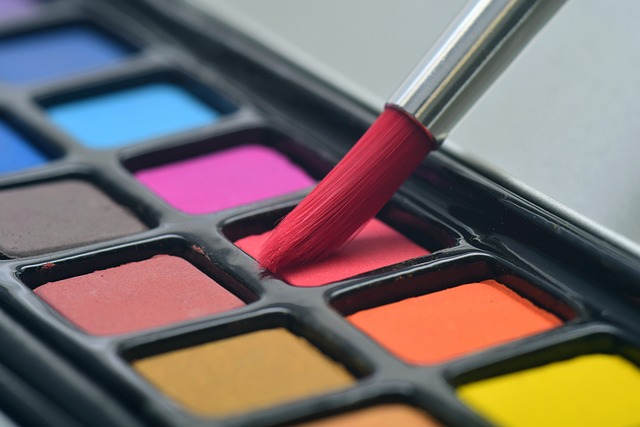# Unleashing AI Art: The New Frontier Where Technology Meets Visual Imagination and Expression
The intersection of artificial intelligence (AI) and art is transforming the creative landscape in unprecedented ways. As technology advances, artists and technologists alike are harnessing the power of AI to push the boundaries of visual imagination and expression. This article delves into the profound impact of AI on the art world, exploring its capabilities, implications, and the ethical considerations that arise as we embrace this new frontier.
## The Evolution of AI in Art
Historically, art has always evolved alongside technological advancements. From the invention of the camera to the rise of digital tools, each innovation has reshaped artistic expression. In recent years, AI has emerged as a powerful force within this continuum. By leveraging machine learning algorithms, artists can now create works that were previously unimaginable. AI systems analyze vast datasets of existing artwork, learning patterns, styles, and techniques, which enables them to generate original pieces that reflect a blend of human creativity and machine intelligence.
One of the most notable developments in this realm is the rise of Generative Adversarial Networks (GANs). These sophisticated algorithms consist of two neural networks: a generator that creates images and a discriminator that evaluates them. This dynamic interplay allows for the production of strikingly original visual art. As artists collaborate with AI, they explore new aesthetic possibilities, often resulting in pieces that challenge traditional notions of authorship and creativity.
Moreover, AI’s ability to process and analyze data at lightning speed allows it to draw inspiration from a multitude of sources. This capability has led to the emergence of unique styles that blend influences from various art movements, cultures, and historical periods. For example, AI algorithms can synthesize elements of Impressionism with contemporary street art, creating hybrid forms that resonate with diverse audiences. The result is a rich tapestry of artistic expression that reflects the complexity of our modern world.
## Redefining the Role of the Artist
As AI continues to evolve, the role of the artist is undergoing a significant transformation. Traditional notions of the artist as a solitary creator are being challenged by collaborative processes that involve both human intuition and machine learning. In this new paradigm, artists act as curators and facilitators, guiding AI systems to produce works that align with their vision while allowing the technology to surprise them with unexpected outcomes.
Collaboration between artists and AI can take many forms. Some artists use AI as a tool to enhance their creative process, employing it to generate initial concepts or explore variations on a theme. Others fully embrace the capabilities of AI, allowing it to autonomously create pieces that they may not have conceived on their own. This blurring of lines raises intriguing questions about authorship and originality, prompting discussions about what it means to be an artist in the age of AI.
In addition, the democratization of art creation is a noteworthy consequence of AI’s integration into the artistic process. With user-friendly AI art generators available online, individuals without formal training can create visually stunning pieces with ease. This accessibility encourages a broader range of voices and perspectives in the art world, fostering inclusivity and diversity in artistic expression. As a result, the traditional gatekeeping mechanisms of the art establishment are being challenged, leading to new opportunities for emerging artists.
## Ethical Considerations and Future Implications
While the integration of AI into the art world offers exciting possibilities, it also raises ethical concerns that warrant careful consideration. The question of authorship is perhaps the most prominent issue, as AI-generated artworks challenge our understanding of creativity. If a machine produces a piece of art, who holds the rights to that work? Is it the programmer, the user who input the parameters, or the AI itself? These questions complicate the legal landscape surrounding intellectual property and copyright in the digital age.
Additionally, the potential for AI to perpetuate biases present in training data is a critical concern. If AI systems are trained on datasets that lack diversity, the resulting artworks may inadvertently reinforce stereotypes or exclude marginalized voices. Artists and technologists must be vigilant in curating datasets and developing algorithms that promote inclusivity and representation in AI-generated art. This responsibility extends beyond the technical realm, requiring ongoing dialogue among artists, ethicists, and technologists to navigate the complexities of AI’s impact on society.
Looking ahead, the future of AI in art is both promising and uncertain. As technology continues to evolve, new tools and techniques will emerge, further blurring the lines between human and machine-generated creativity. The potential for AI to serve as a catalyst for artistic exploration is immense, but it also calls for a thoughtful approach to ensure that the art world remains a space for genuine expression and connection.
## Conclusion
In conclusion, AI is undeniably transforming the landscape of art, offering new avenues for creativity, collaboration, and expression. As artists embrace this technology, they are redefining their roles and challenging conventional notions of authorship and originality. While the ethical implications of AI-generated art require careful consideration, the potential for innovation and inclusivity is vast. As we stand at the cusp of this new frontier, the marriage of technology and visual imagination promises to reshape the art world in ways we have yet to fully comprehend. Embracing this evolution with an open mind will allow us to explore the boundless possibilities that lie ahead, as we unleash the full potential of AI art.

